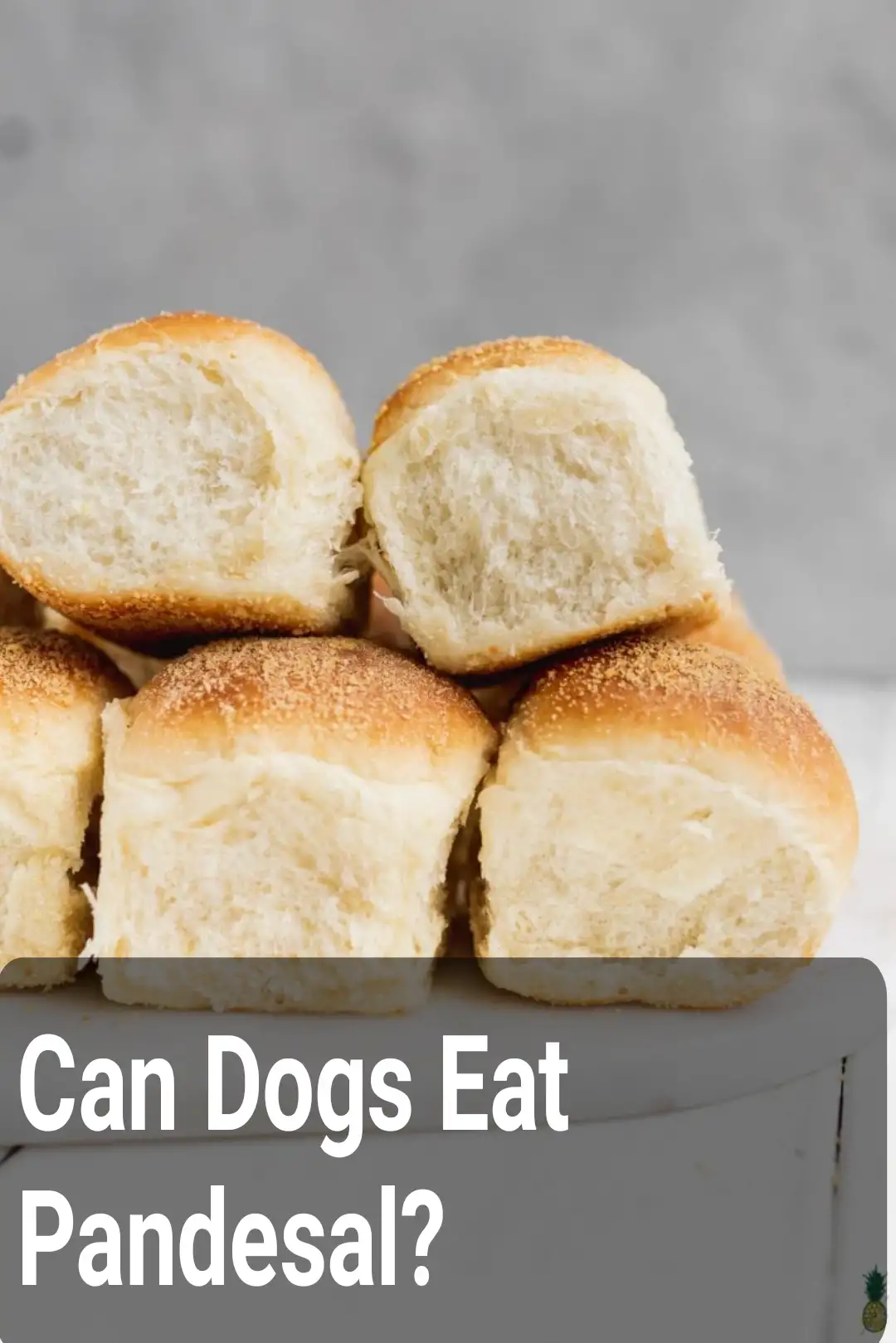Can Dogs Eat Pandesal?

You need to witness the love for pandesal firsthand in Kamuning bakery in the Philippines, where consumers wait eagerly to lay their hands on a freshly baked hot pandesal from the oven.
The impressive light brown crunchy crust and soft crumb texture are always a joy to behold. Dipped in hot coffee or served with a jam or butter filling, pandesal never fails to impress the taste buds, but can dogs eat pandesal?
Here is everything you need to know about serving some pandesal for dogs: possible benefits, drawbacks, and safe amounts to feed them.
What is Pandesal?
If the Philippines had a national bread, it would have been pandesal—an airy soft flour roll. The term pan de sal is a Spanish word for “salt bread.” Contrary to the Spanish interpretation of pan de sal, the bread is sweet. Pandesal was born when the Spaniards decided to best the French baguette.
Pandesal makes up over 50% of the entire bakery production. It is derived from a combination of water, sugar, flour, salt, fat, and yeast, then shaped into bastons (long logs) before being rolled in bread crumbs and then set to rest, after which it is cut by a dough cutter into portions, then baked.
Healthy and innovative variants of the traditional pandesal are being created by chefs, including the ube, garlic, carrots, and hot dog versions. I play around with pandesal, spreading my favorite Nutella, jam, ice cream, or even bread pudding, munching, and enjoying every bite of the versatile Philippine bread.
Can Dogs Eat Pandesal?
Dogs can have no more than two pandesals at once. Pandesal contains ingredients that are generally safe for dogs in moderation, provided your pooch doesn’t have pancreatitis or wheat allergies and is not fed the garlic variant of pandesal.
Pandesal is a leavened bread, which means it contains yeast, and all forms of leavened bread, be they white or brown, are safe for dogs in moderation. Further, the wheat used, just like durum wheat used in making semolina for dogs, is safe for dogs, provided it is baked and not served as raw dough.
The salt content of pandesal is usually inconsequential and cannot cause sodium poisoning. It is also a relatively low-fat treat.
As for the sugar content, sugar isn’t toxic to dogs. Dogs can have natural sugar from sources like fruits and veggies, but when it comes to processed sugar used in pandesal or caramelized sugar used in panna cotta, dogs can only have them in treats occasionally and moderately as they are capable of causing dental disease, obesity, and diabetes if fed in significant amounts—constantly—to your pooch.
How Much Pandesal Is Too Much?
Each pandesal contains 110mg of cholesterol, 1 gram of fiber, 5 grams of fat, 85mg of sodium, and 23 grams of carbs. A dog has a cholesterol cap of 500mg or 0.5 g per day, 13.8 g/100 kcal (min) to 82.5 g/100 kcal (max) of fat daily, and 1,500 mg of sodium daily, making 1 to 2 pandesal safe for dogs.
Why you shouldn’t exceed two pandesals is that you have to take into consideration fats, carbs, sodium, and possible cholesterol in your dog’s main food, and if you combine everything, you’ll be close to the daily cap.
My Dog Ate Pandesal, What Will Happen?
If your dog ate pandesal, I can guarantee that it’d keep wagging its tail in joy. Besides that, nothing will happen except that your dog has allergies to wheat.
However, when you feed garlic-infused pandesal or when you feed way too much pandesal to your dog, you may just be opening a portal for adverse effects on your pooch’s health.
Other Bread-like Snacks Dogs Can Eat
Wondering what kind of bread you could offer your pooch as a treat? Here are dog-safe breads:
- Ezekiel bread: Ezekiel bread is not your regular bread. It is made with sprouted grains, legumes, and organic ingredients only. It boasts way more nutrients than average bread, as the nutrient profile increases over three times once the grains are sprouted, which is why your dog can only have a slice at most.
- Paratha: The Indian culinary culture cannot do without bread in one way or another, and one of those breads is paratha. This bread is usually made with dog-safe ingredients, but you should always verify the ingredients before offering it to your pooch.
- White and brown bread: All forms of plain white and brown bread are safe for dogs to consume in moderation.
Bread You Shouldn’t Hand To Your Pooch
While dogs can have bread and buns, not all of them are safe for dogs. Here is a list of breads you should avoid giving your pooch:
- Bread with raisins: It is not news that raisins are highly toxic to dogs. In some instances, even as little as 1 to 2 raisins triggered toxicity symptoms. This is why you should not feed dogs bread or cereals with raisins.
- Bread made with garlic or onions: Garlic and onions are toxic to dogs; while a little may not be harmful, you don’t want to test the toxic threshold of your dogs, nor do you want to put them in pain, so it is advisable not to give them bread made with garlic or onions.
Final Thoughts
Dogs can have pandesal, but in moderation, as giving them too much may lead to eclipsing their daily nutritional values. Bread of all forms is safe for dogs, provided your dog doesn’t have allergies and no harmful ingredients like garlic, onion, xylitol, or raisins are used.



